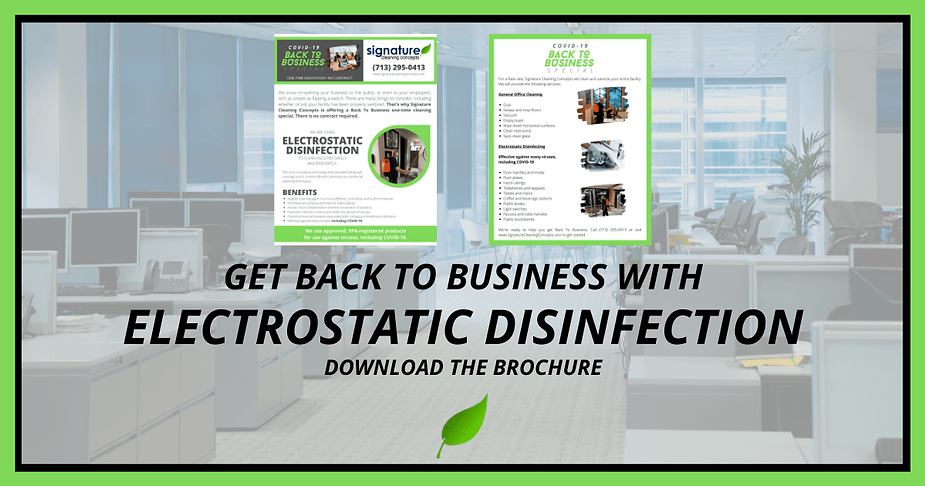How Electrostatic Cleaning Costs Less?
Compared to traditional spray and wipe cleaning methods, electrostatic cleaning costs less. It also reduces storage space needed for rags and other cleaning supplies.
This process uses a special nozzle to apply a thin layer of disinfectant solution. It is known for its ability to reach small, hard-to-reach spots.
No rags are needed
Unlike traditional cleaning methods, which require a cloth to wipe surfaces, electrostatic spraying uses positively charged particles that make disinfecting chemicals electromagnetically cling to germ-ridden areas. This process eliminates the need for cleaning rags, which helps cut down on the cost of disinfection products and storage space for the rags themselves.
The mist created by the electrostatic sprayer also covers more surface area than standard cleaners, making it possible to reach into crevices and microscopic spaces that regular cleaners and wipes can’t. It also dries quickly without the need for wiping, which is less time-consuming than other cleaning techniques.

In addition, it allows your cleaning staff to stay a safe distance from potentially infected surfaces, which helps prevent the spread of germs. While disinfection does not create a protective barrier, it is an excellent option for keeping high hygiene standards and maintaining compliance with health code requirements, especially during peak flu season. It is highly recommended to disinfect spaces with this method on a weekly basis to maintain the highest levels of cleanliness and safety for employees and customers alike.
Less time is required
Using electrostatic spraying equipment, which uses a specialized nozzle to disperse liquid disinfectant, helps cleaning staff clean and disinfect surfaces quickly. It is especially effective in hard-to-reach areas and on high-traffic surfaces.
The specialized sprayer gives the disinfectant a positive charge so that it clings to the surface it’s aimed at, and provides a more even coating than other methods. It is also safe for those nearby during application, as well as afterward.
With traditional wiping methods, a person has to be within arm’s reach of a surface to wipe it down, and it can be hard to keep track of whether that particular square centimeter of a desk was cleaned or not. With electrostatic cleaning, however, a cleaning crew can stand several feet away and still ensure that everything is covered in the disinfectant solution. This can save time, as well as help to stretch chemical supplies further.
No cross-contamination occurs
When a person wipes down a surface with a traditional disinfectant, they coat the cleaning cloth in germs and bacteria. When they then wipe down another surface, they inadvertently spread the germs to that area as well.
With electrostatic disinfection, no cross-contamination occurs. The spray mist coats surfaces evenly, and even hard to reach areas or upholstered objects are able to be disinfected with this method.
Because the sprayers create a fine mist and allow it to dry naturally, there is no need for wiping or drying. Additionally, the solution stays wet for longer than with a traditional cleaner and disinfectant which allows the solution to have a greater chance of killing germs. However, electrostatic disinfection does not form a protective barrier and should be used in conjunction with cleaning services to help protect against the reintroduction of viruses or bacteria. This also means that the frequency of services should be based on the facility, with medical and sensitive facilities typically opting for more frequent disinfection service.

No missing spots
Electrostatic spraying is a quick and effective way to disinfect surfaces in your workplace. It is much faster than traditional cleaning methods and it uses less harsh chemicals. However, you should make sure your staff knows how to use the equipment correctly to avoid contamination issues.
The nozzles of the electrostatic sprayers have an electrical charge, which causes the disinfectant to wrap around and cover all negative surfaces, including the underside of an object. This ensures that every surface, and even upholstered items, are disinfected.
The electrostatic sprayers can be battery-operated or mains-powered, and come in a variety of sizes with tanks ranging from one to five gallons. Some are backpack-style and others have roller carts with one to five nozzles. They all dispense safe hospital-grade disinfectant to quickly and thoroughly clean a workspace, eliminating harmful germs and bacteria. They also work on difficult-to-reach areas, such as corners, ledges and edges. This means they can save you time and money in addition to providing a high level of protection against the coronavirus.
https://www.google.com/maps?cid=5464939504344514741



